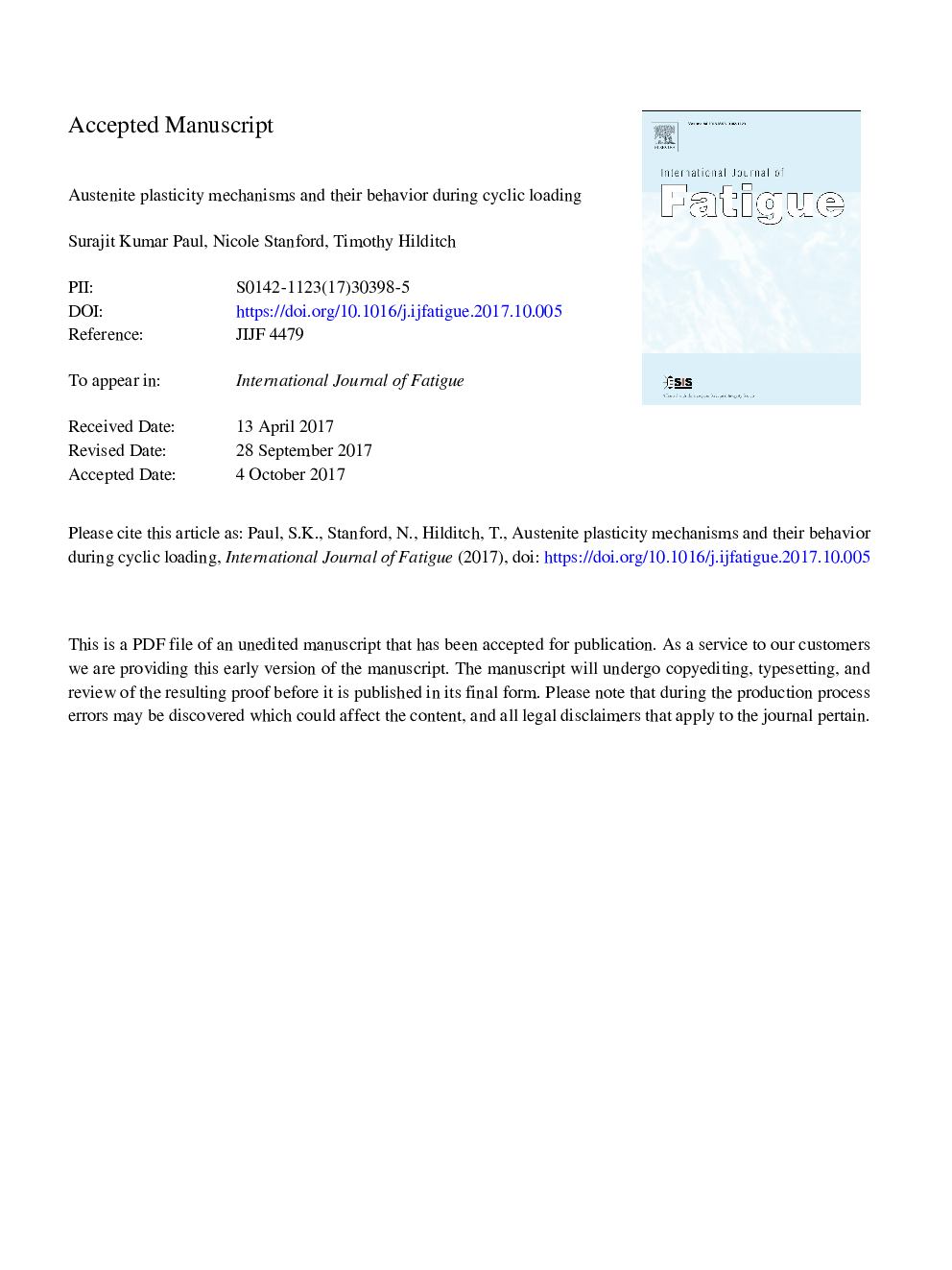| کد مقاله | کد نشریه | سال انتشار | مقاله انگلیسی | نسخه تمام متن |
|---|---|---|---|---|
| 5014874 | 1463716 | 2018 | 31 صفحه PDF | دانلود رایگان |
عنوان انگلیسی مقاله ISI
Austenite plasticity mechanisms and their behavior during cyclic loading
ترجمه فارسی عنوان
مکانیزم های پلاستیکی آستنیت و رفتار آنها در طی بارگیری سیکل
دانلود مقاله + سفارش ترجمه
دانلود مقاله ISI انگلیسی
رایگان برای ایرانیان
کلمات کلیدی
موضوعات مرتبط
مهندسی و علوم پایه
سایر رشته های مهندسی
مهندسی مکانیک
چکیده انگلیسی
The low cycle fatigue (LCF) response of three austenitic steels has been studied over a range of cold-rolled reductions. The three steels have different plasticity mechanisms during cyclic deformation: one with prominent transformation induced plasticity (TRIP) behavior, one with a moderate TRIP response, and the third alloy deformed only by slip. The LCF life was found to be directly correlated to the tensile ductility, with more ductile materials showing the highest LCF lifetimes. This relationship was found to be a first order effect, indicating that regardless of the plasticity mechanism (slip or TRIP) the overall ductility of the alloy predominantly determines the LCF lifetime. This is consistent with the observations on dislocation density which showed that an increase in dislocation density during LCF correlated to higher LCF lifetimes, while a drop in dislocation density gave comparatively poor LCF behaviour. The TRIP effect was observed to occur at significantly lower applied stress levels during cyclic fatigue compared to monotonic loading. It is suggested that the development of local stress concentrations during cyclic loading allows transformation to martensite even though the global applied stress is below the critical value required for transformation. The results also suggested that a higher volume fraction of austenite to martensite transformation may provide a small benefit to the LCF life relative to that expected from the tensile ductility.
ناشر
Database: Elsevier - ScienceDirect (ساینس دایرکت)
Journal: International Journal of Fatigue - Volume 106, January 2018, Pages 185-195
Journal: International Journal of Fatigue - Volume 106, January 2018, Pages 185-195
نویسندگان
Surajit Kumar Paul, Nicole Stanford, Timothy Hilditch,
